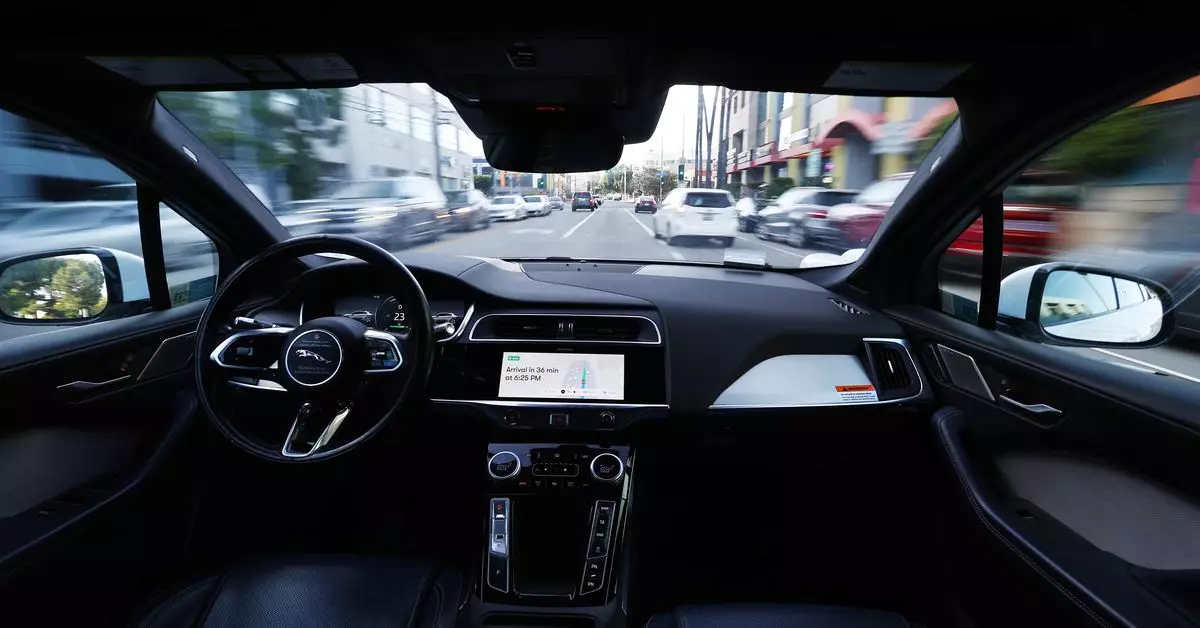In the competitive sphere of autonomous vehicle technology, Waymo stands out as a clear frontrunner, particularly in the robotaxi segment. While many potential rivals remain bogged down by insufficient funding or prolonged testing phases, Waymo continues to build a robust business, having recently announced that it has successfully completed 4 million driverless rides in cities like Phoenix, San Francisco, and Los Angeles. This impressive figure highlights not just the company’s unparalleled operational capacity but also its potential for future growth, as it looks to expand its service areas and enhance rider experiences.
With a total of 5 million driverless rides logged across its key markets, it is evident that much of this growth occurred within a single year, marking a significant acceleration in service uptake. Currently, Waymo’s operational footprint spans approximately 500 square miles across its major cities, as well as a pilot operation in Austin that operates with a waitlist. The company has ambitious plans to penetrate other markets, including Atlanta and Miami, and is experimenting with international possibilities in Japan.
Waymo’s commitment to sustainability is another critical component of its operational narrative. The company operates exclusively with electric vehicles, leading to the avoidance of over 6 million kilograms of CO2 emissions. This impressive figure, which considers passenger occupancy rates and average trip lengths, demonstrates Waymo’s potential as a leader in environmentally friendly transportation solutions.
To further enhance user engagement, Waymo has introduced personalized experiences through its Waymo One app, including a “Year in Review” feature that resembles Spotify Wrapped. Riders can view their unique travel statistics, which include miles traveled, emissions avoided, and favorite destinations, creating a more personalized experience with the brand. In cities like Phoenix, San Francisco, and Los Angeles, popular destinations include Sky Harbor International Airport, the Ferry Building, and The Grove shopping center, underscoring the significance of reliable airport services in driving consumer demand.
Despite these optimistic indicators, Waymo faces considerable financial hurdles that could impede its growth trajectory. Alphabet, the parent company, has steered a substantial $5.6 billion funding round toward Waymo to help bolster its operations and financial stability as it prepares for an expanded market presence. The latest financial reports indicate a revenue of $388 million for Waymo’s “Other Bets” unit, showing an increase from $297 million year-over-year. However, losses have only slightly decreased to $1.12 billion from $1.94 billion, highlighting the ongoing struggle for profitability.
As Waymo looks to expand its operations, issues related to pricing strategies will become more pressing. Currently positioned in the “premium” segment of the ride-hailing market, akin to Uber Black, the service faces challenges in recouping high operational costs tied to specialized vehicles like the retrofitted Jaguar I-Pace. With a weekly trip volume of 175,000, the company must innovate its approach to service expansion to avoid becoming financially unfeasible.
Safety remains a paramount concern for Waymo as it navigates its future. Despite studies that suggest its vehicles surpass the safety performance of human drivers, public perception can be unpredictable. Instances of vandalism, harassment, and confrontation with emergency vehicles have raised legitimate questions about passenger safety. As the company continues to grow, addressing these safety issues will be crucial for maintaining consumer trust and expanding its user base.
Moreover, Waymo must look to diversify its service offerings beyond its current model of airport transportation. The need for increased familiarity with highway navigation and the provision of comprehensive mobility options in various cities cannot be overstated. As the autonomous vehicle market evolves, attracting customers and satisfying their evolving needs will dictate whether Waymo can convert its technological advantage into a lasting competitive edge.
Waymo’s ascendance in the robotaxi industry paints a promising picture for the future of transportation. While the challenges of profitability, safety, and market expansion loom large, the company’s innovative strides, environmental commitment, and customer-focused initiatives position it to maintain a substantial role in the autonomous vehicle landscape. As Waymo gears up for another year, its success will hinge on its ability to balance these multifaceted challenges while leveraging its inherent advantages in technology and unique customer experiences. In the ever-evolving world of transportation, adaptability and efficacy will be key to Waymo’s sustained growth and ongoing relevance.

